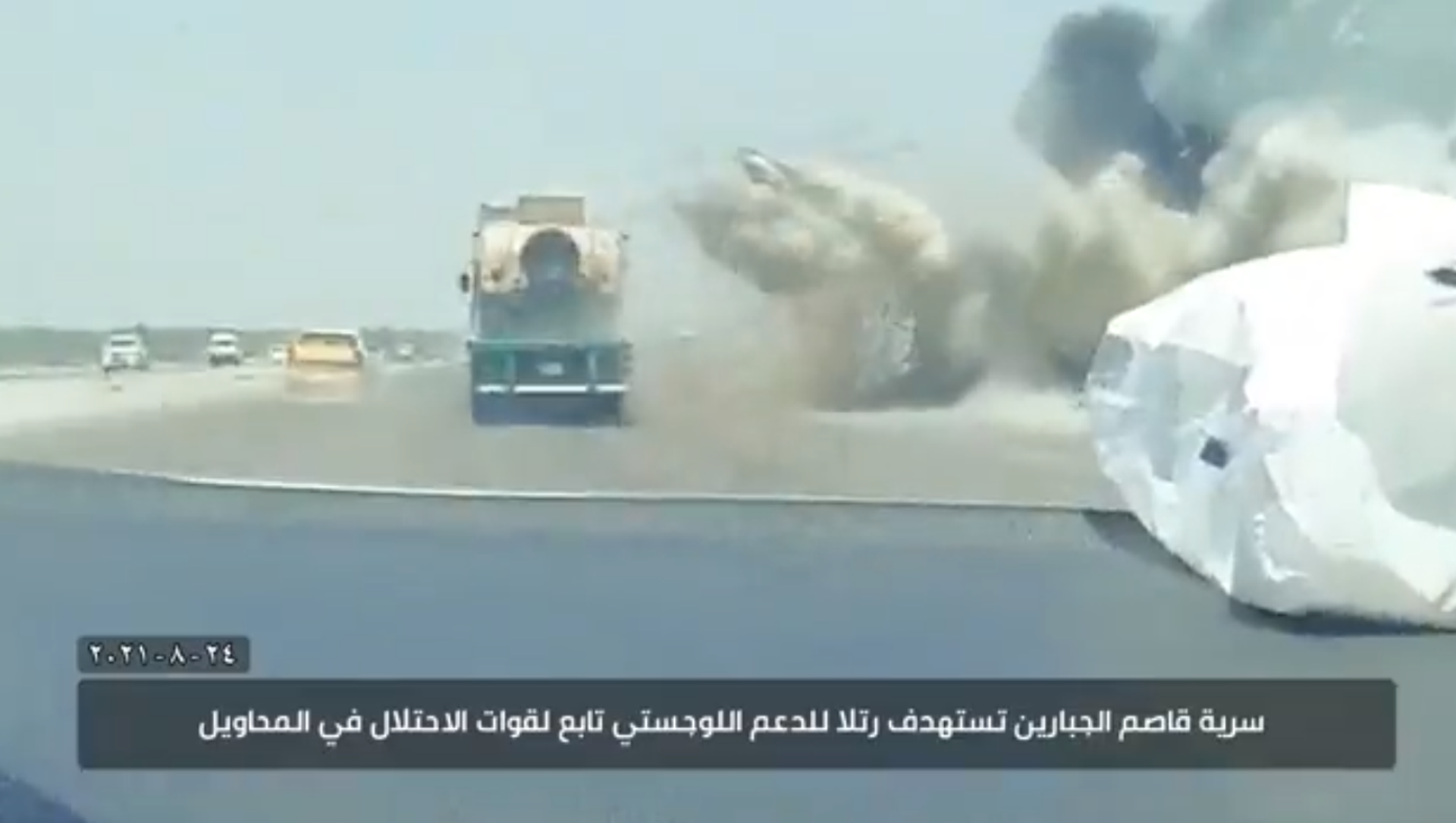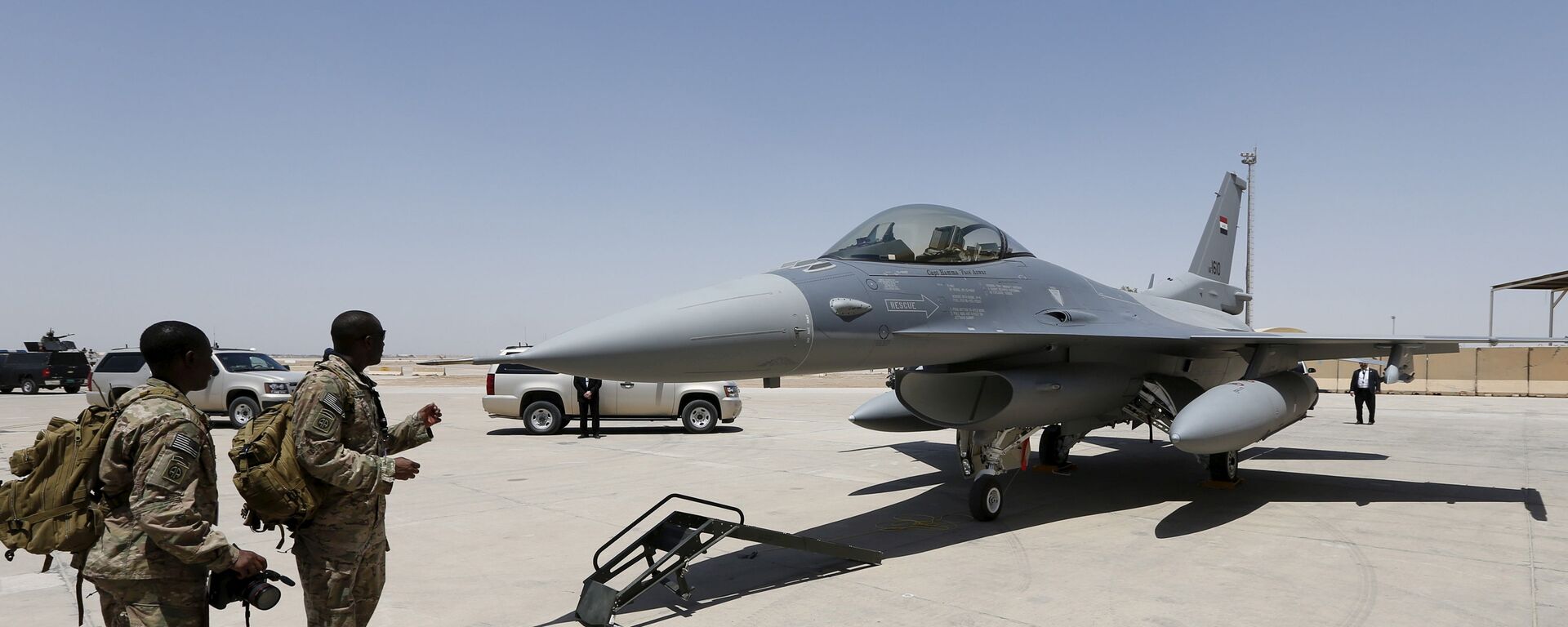Iraqi Militias Claim to Attack Eight US Logistics Convoys in 24 Hours
18:57 GMT 26.08.2021 (Updated: 19:07 GMT 26.08.2021)

© Photo : Twitter / @IbrahimDSY1
Subscribe
Baghdad-allied Shia militias in Iraq have expressed dissatisfaction with the government’s recently-signed US forces agreement, which allows for a limited contingent of US troops to stay in the country, and have insisted that all US personnel, including trainers and elements of the US Air Force, leave the country immediately.
Shia militias targeted as many as eight US logistics convoys in a single day, Sabereen News, an outlet affiliated with the militias, has alleged.
The spate of suspected attacks was reported to have taken place Tuesday, with convoys targeted in the Nasiriyah and Samawah areas in southeastern Iraq, with two more attacked in al-Diwaniyah, capital of the southeastern province of al-Qadisiyyah. Two improvised explosive device attacks were reported in Babil province, with a US Army logistics convoy targeted in Baghdad’s Yusufiyah district, more vehicles attacked in al-Taji and two other convoys struck in al-Muthana and Dhi Qar provinces.
Qasem al-Jabbarin (lit. ‘Smasher of the Oppressors’), a shadowy militia force which US officials allege is a front for Kataib Hezbollah specializing in roadside bombings, claimed responsibility for the attacks. The US classifies Kataib Hezbollah as a ‘terrorist organisation’, and has repeatedly attacked the militants’ facilities across Iraq and Syria, sparking condemnation from officials in both Baghdad and Damascus.
According to Arabic-language outlet ISWNews, Tuesday’s attacks brought the total number of strikes on US logistical convoys in Iraq up to 130 since March.
The Pentagon has not commented on the suspected attacks.
Qasem al-Jabbarin released footage, showing what appear to be multiple roadside explosions near tanker and truck convoys traveling along highways. Sputnik has not been able to verify the footage to determine that it was filmed when or where the militia claim it was.
August 24, Eight IED attacks against #US logistical convoys in #Iraq in one day.
— Ibrahim Muhammad (@IbrahimDSY1) August 25, 2021
Iraqi resistance groups attacked US logistical convoys in the Naseriyah, Samawah areas. Two convoys were also attacked in Diwaniyah and the other two separately in Babel area and Baghdad city. pic.twitter.com/CR2SIIQuW1
Shia militias have long targeted the US supply convoys, with the attacks typically hitting resupply convoys, but also troops and equipment fleets, and columns of trucks entering the country from Syria in the west and Kuwait in the south. The US regularly shuttles military vehicles and trucks laden with stolen Syrian oil and wheat via the illegal al-Waleed crossing point between western Iraq and southern Syria.
Iraqi Prime Minister Mustafa al-Kadhimi and US President Joe Biden reached an agreement last month under which all US combat forces would be withdrawn from Iraq by the end of 2021, with some US troops to be allowed to stay on for a “training, advising, assisting and intelligence-sharing role.” The two sides did not specify how many US troops would remain in the new year, nor whether any of the existing “combat troops” would be rebranded to other roles in the coming months.
Some Iraqi Shia militia forces have expressed dissatisfaction with the troop withdrawal agreement, demanding that all US forces, including trainers and all US Air Force personnel, leave the country as well.
The US has drawn down troop numbers in Iraq significantly since 2020 and the aftermath of the unprovoked assassination of Iranian general Qassem Soleimani in Baghdad in January of that year, which prompted Shia militias to strike US bases with artillery and led Iraq’s parliament to issue a resolution demanding that all troops leave the country. Between March 2020 and January 2021, US troop numbers in Iraq were whittled down from 5,300 to 2,500 total personnel. The Trump administration indicated that the US may quit Iraq entirely in late 2020, but the Biden administration froze these plans pending the negotiations on a new ‘security partnership’ with Baghdad.
The US has now had forces in Iraq for fifteen of the past eighteen years, invading the country in 2003, and pulling troops out in 2011. In 2014, the rise of the Daesh (ISIS)* terrorists gave the US the pretext to return. Daesh was defeated in 2017, but US forces stayed on, with Washington justifying its presence with the alleged threat posed by the terrorist group reconstituting itself.
* A terrorist group outlawed in Russia and many other countries.


